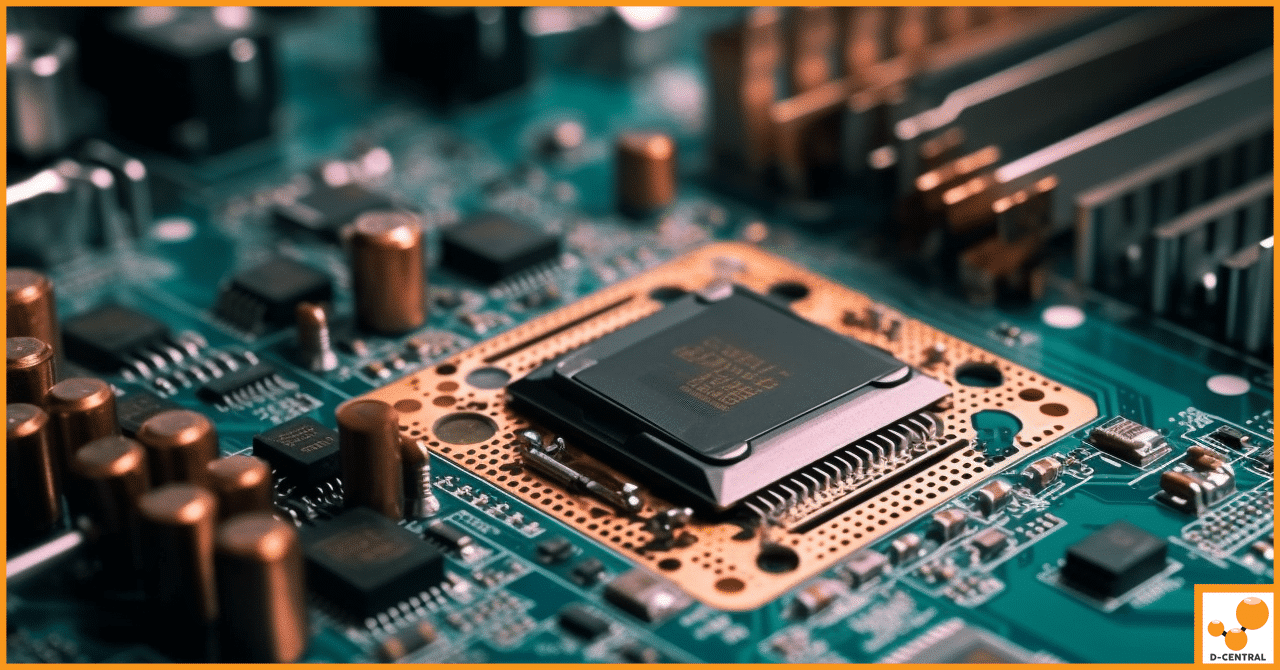
The ASIC Miner Market: Size, Players, and Trends
In the rapidly evolving world of cryptocurrency, Application-Specific Integrated Circuit (ASIC) miners stand as the pinnacle of mining technology, offering
4479 Desserte Nord Autoroute 440, Laval, QC H7P 6E2

In the ever-evolving landscape of modern technology, Application-Specific Integrated Circuits, commonly known as ASIC chips, stand out as a pivotal innovation. These specialized chips, designed to perform specific tasks, have revolutionized the way we approach problem-solving in the digital world. Unlike general-purpose processors that cater to a broad range of applications, ASIC chips are tailored for a singular purpose, offering unparalleled efficiency and performance in their designated roles.
The significance of ASIC chips extends across various sectors, from consumer electronics to complex industrial systems. However, their impact is most notably seen in the realm of Bitcoin mining, where they have transformed the efficiency and effectiveness of the mining process. This shift towards ASIC-based mining has not only redefined the standards of cryptocurrency mining but also highlighted the chip’s potential in handling specific, computationally intensive tasks.
In this article, we delve into the world of ASIC chips, exploring their fundamental aspects, the intricate process behind their design, the myriad advantages they offer, and their diverse applications. Central to our exploration is their role in Bitcoin mining, a field where ASIC chips have become synonymous with progress and efficiency. By understanding the basics and the nuances of these powerful chips, we aim to shed light on how they continue to shape and drive technological advancements in our increasingly digital world.
Application-Specific Integrated Circuits (ASICs) are a type of integrated circuit explicitly designed for a particular use, rather than for general-purpose applications. Unlike standard microprocessors that can perform a broad range of tasks, ASIC chips are tailored to execute specific functions. This specialization allows them to excel in performance and efficiency for their intended application.
The architecture of an ASIC is custom-developed to carry out a set of predefined tasks. For instance, in the context of Bitcoin mining, ASICs are optimized to solve complex cryptographic puzzles, a requirement central to the mining process. This level of customization means that once an ASIC is manufactured, its functionality and purpose are fixed.
Comparison with General-Purpose Microprocessors and FPGAs:
In summary, ASIC chips represent a focused approach in the world of integrated circuits, designed to excel in specific tasks. Their emergence has been a game-changer in various fields, particularly in areas requiring high efficiency and performance in specific applications, such as Bitcoin mining.
The journey of Application-Specific Integrated Circuits (ASICs) is a fascinating tale of technological evolution and innovation. From their inception to their current prominence, ASIC chips have undergone significant transformations, reshaping the landscape of computing and digital processing.
Historical Development of ASICs
The concept of ASICs emerged in the late 20th century as a response to the growing need for specialized processing in various electronic devices. Initially, these chips were rudimentary, designed for specific tasks in telecommunications and computing. However, as technology advanced, the complexity and capabilities of ASICs grew exponentially. They evolved from simple designs to sophisticated circuits capable of handling intricate tasks with remarkable efficiency.
This evolution was driven by advancements in semiconductor technology, miniaturization, and design methodologies. The ability to pack millions of transistors into a small chip allowed for greater functionality and specificity in ASIC designs. This era of rapid development in ASIC technology paralleled the broader trends in the semiconductor industry, marked by the relentless pursuit of Moore’s Law.
The transition from CPUs and GPUs to ASICs in Various Industries
The evolution of ASIC chips is a testament to the relentless progress in the field of semiconductor technology. As we continue to push the boundaries of what’s possible, ASICs stand as a symbol of our ability to tailor technology to meet specific needs, driving efficiency and innovation across various industries.
The creation of an Application-Specific Integrated Circuit (ASIC) is a meticulous and complex process, encompassing various stages from the initial concept to the final production. This journey, known as the ASIC design flow, involves multiple steps, each critical to the development of a successful and efficient chip.
1. Specification:
2. Design:
3. Simulation:
4. Fabrication:
5. Testing:
The ASIC design process is a testament to the intricate and advanced nature of modern semiconductor engineering. It combines cutting-edge technology, precision engineering, and meticulous testing to produce chips that are tailored to specific and often critical applications.
In the dynamic world of electronics, Application-Specific Integrated Circuits (ASICs) have emerged as a cornerstone technology, driving innovation and efficiency across various sectors. Their role in advancing the capabilities of electronic devices is both transformative and far-reaching.
Role of ASICs in Advancing Electronic Device Capabilities:
Impact on Efficiency, Performance, and Customization:
ASICs play a pivotal role in the electronics industry, pushing the boundaries of what is possible in electronic device capabilities. Their impact on efficiency, performance, and customization has set new standards in the design and functionality of electronic systems, making them indispensable in the modern technological landscape.
Application-Specific Integrated Circuits (ASICs) have become increasingly prevalent in the tech industry, offering a range of benefits over general-purpose processors. These specialized chips are engineered to excel in specific tasks, providing enhanced performance, efficiency, and customization that general-purpose processors cannot match.
Enhanced Performance and Efficiency:
Reduced Power Consumption and Increased Speed:
Customization for Specific Applications:
SEO Keywords: ASIC advantages, power efficiency, high performance.
In summary, ASICs provide a range of benefits over general-purpose processors, including enhanced performance, reduced power consumption, increased speed, and the ability to be customized for specific applications. These advantages make ASICs a preferred choice in various high-performance and energy-sensitive applications, marking a significant shift in the landscape of electronic circuit design.
Application-Specific Integrated Circuits (ASICs) have carved out a significant niche in various industries, thanks to their specialized functionality and efficiency. Their applications span a wide range of sectors, from consumer electronics to more complex systems in medical, automotive, and industrial fields. A notable area of application, which has gained immense popularity, is in Bitcoin mining.
Diverse Applications in Various Sectors:
Special Focus on ASICs in Bitcoin Mining:
The applications of ASIC chips are vast and varied, impacting numerous sectors with their specialized capabilities. Their role in Bitcoin mining, in particular, highlights their potential to drive significant advancements and efficiencies in specific, high-performance tasks.
The advent of Application-Specific Integrated Circuits (ASICs) in Bitcoin mining marked a paradigm shift in the landscape of cryptocurrency mining. This transition from traditional CPU and GPU mining to ASIC mining has had profound implications on mining efficiency and the overall robustness of the Bitcoin network.
The Transition from CPU/GPU Mining to ASIC Mining in Bitcoin:
Impact on Mining Efficiency and the Bitcoin Network:
In summary, the introduction of ASICs in Bitcoin mining has been a transformative development, significantly enhancing mining efficiency and network security. However, it has also introduced new dynamics into the Bitcoin ecosystem, particularly regarding the centralization of mining power.
Designing and producing Application-Specific Integrated Circuits (ASICs) involves navigating a complex landscape of technical and economic challenges. These challenges require a careful balance between performance, cost, and time-to-market, making ASIC design a highly specialized and intricate process.
Technical and Economic Challenges in ASIC Production:
Balancing Performance, Cost, and Time-to-Market:
The design and production of ASICs involve a complex interplay of technical expertise, economic considerations, and market dynamics. Successfully navigating these challenges requires a strategic approach to balance performance, cost, and time-to-market, ensuring the final product meets the specific needs of its intended application.
Throughout this exploration of Application-Specific Integrated Circuits (ASICs), we have delved into various facets of these remarkable chips, uncovering their intricacies, applications, and the significant role they play in modern technology. From their specialized design process to their transformative impact across multiple industries, ASICs stand as a testament to the incredible advancements in semiconductor technology.
ASICs continue to be a crucial component in the advancement of technology. Their ability to be tailored for specific applications not only drives innovation but also opens up new possibilities for technological solutions. As industries continue to evolve and demand more specialized and efficient processing power, the role of ASICs is likely to expand and become even more integral.
For those intrigued by the potential and capabilities of ASICs, there is a wealth of information to explore. Whether you are a technology enthusiast, a professional in the electronics industry, or someone interested in the future of tech, delving deeper into the world of ASICs offers valuable insights into the cutting-edge of semiconductor technology.
ASIC chips, with their specialized capabilities and evolving applications, continue to be a driving force in the technological landscape. Their ongoing development and adaptation will undoubtedly play a pivotal role in shaping the future of various industries and technological innovations.
What is an ASIC chip?
An Application-Specific Integrated Circuit (ASIC) is a specialized chip designed to perform a particular task, offering enhanced efficiency and performance when compared to general-purpose processors.
How do ASIC chips differ from general-purpose microprocessors and FPGAs?
ASIC chips are tailored for a specific function, offering unparalleled efficiency and performance in that role, while general-purpose microprocessors are designed for a wide range of tasks. FPGAs provide a balance of specialization and flexibility as they can be configured after manufacturing, but they typically do not match the efficiency and speed of ASICs.
What are the advantages of ASIC chips?
ASIC chips provide optimized performance for specific tasks, reduced computational overhead, high energy efficiency, high-speed processing, and the ability to be customized for particular applications.
What has been the impact of ASIC chips on Bitcoin mining?
ASIC chips have revolutionized Bitcoin mining by increasing efficiency and security, and by leading to the industrialization of mining operations with the creation of large-scale mining farms.
What are the technical and economic challenges in ASIC design and production?
Challenges include high initial costs, complex design processes, rapid technological changes, and the need to balance performance optimization with cost management and time-to-market considerations.
What are some applications of ASICs in various sectors?
ASICs are used in consumer electronics like smartphones, in medical equipment, automotive systems, industrial automation, and prominently in cryptocurrency mining.
In what ways have ASICs shaped modern technology?
ASICs have driven innovation and efficiency, leading to the miniaturization of devices, enhanced device performance, power conservation, and enabled technological solutions tailored to specific market needs.
DISCLAIMER: D-Central Technologies and its associated content, including this blog, do not serve as financial advisors or official investment advisors. The insights and opinions shared here or by any guests featured in our content are provided purely for informational and educational purposes. Such communications should not be interpreted as financial, investment, legal, tax, or any form of specific advice. We are committed to advancing the knowledge and understanding of Bitcoin and its potential impact on society. However, we urge our community to proceed with caution and informed judgment in all related endeavors.
Related Posts

In the rapidly evolving world of cryptocurrency, Application-Specific Integrated Circuit (ASIC) miners stand as the pinnacle of mining technology, offering

As an avid cryptocurrency miner, I understand the importance of maintaining my mining equipment to ensure optimal performance and a

In the digital age, Bitcoin has emerged as a revolutionary form of currency, challenging traditional financial systems with its decentralized